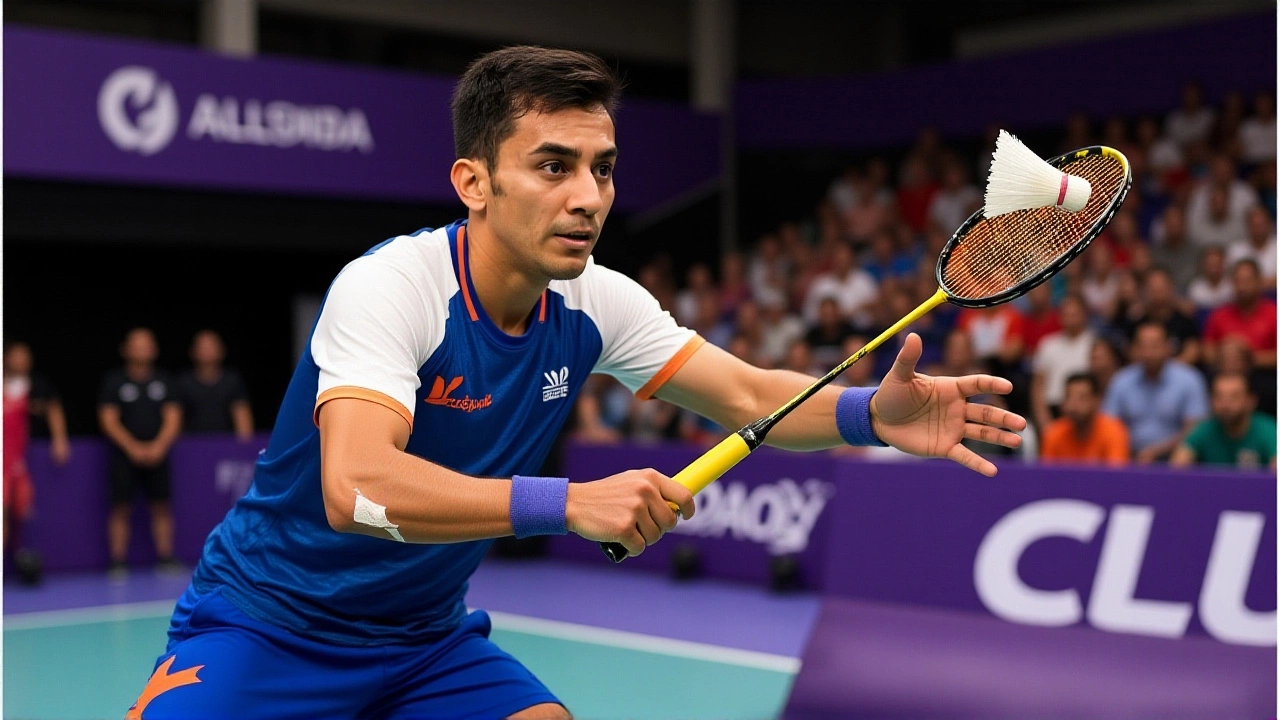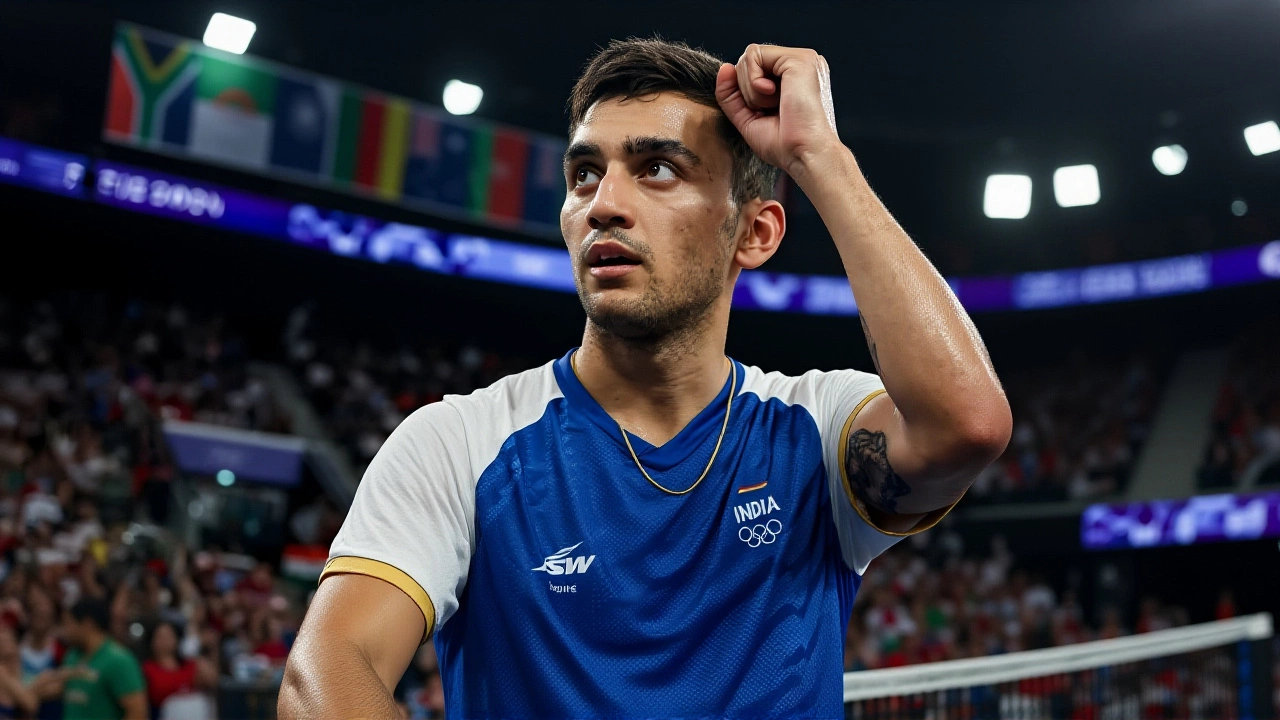
When Lakshya Sen slammed his final half-smash into the back corner of the court, closed his eyes, and put his fingers to his ears — the same gesture made famous by Indian cricketer KL Rahul — the State Sports Centre in Sydney erupted. It wasn’t just a point. It was a statement. On Sunday, November 23, 2025, the 24-year-old Indian shuttler captured his first title of the year, defeating Japan’s unseeded Yushi Tanaka 21-15, 21-11 in a crisp 38-minute final at the Australian Open Super 500. The win didn’t just end a nine-month title drought; it reasserted India’s growing dominance in international badminton.
Indian Badminton’s Breakout Week in Sydney
The Australian Open Super 500 became a showcase for Indian talent. Five singles players advanced to the second round: Lakshya Sen, HS Prannoy, Kidambi Srikanth, Ayush Shetty, and Tharun. In doubles, the world No. 3 pair of Satwiksairaj Rankireddy and Chirag Shetty fought through a nail-biting 48-minute opener against Chinese Taipei’s Chang Ko-Chi and Po Li-Wei, winning 25-23, 21-16. The match turned on a series of net errors from the Taiwanese duo — one saved by a brutal smash, another gifted by a missed opportunity, and the final nail hammered by Sen and Chirag’s precision.It was the kind of gritty, momentum-shifting win that defines champions. But while the doubles pair kept their campaign alive, it was Sen who turned the tournament into a coronation.
Sen’s Clinical Masterclass in the Final
From the first serve, Sen looked like a man with a mission. Tanaka, a dangerous but inconsistent opponent, opened with a few sharp drops, but Sen answered with flat, laser-like returns that kept the Japanese shuttler pinned behind the baseline. The first game was tight early — Tanaka clawed back to 7-9 — but Sen’s control never wavered. He used his footwork to dominate the net, and when he unleashed his smashes, they weren’t just powerful; they were surgical. A long return from Tanaka gave Sen five game points. He didn’t waste one.The second game was a masterclass in momentum control. Sen opened with a 4-0 lead, then stretched it to 8-4. Tanaka, visibly rattled, started making unforced errors — netted smashes, wayward clears, missed lobs. Sen’s backline judgment was flawless. He didn’t just win rallies; he broke Tanaka’s spirit. At 17-8, the crowd chanted "Lakshya! Lakshya!" as if it were a cricket match in Chennai. When the final point landed, Sen didn’t jump. He didn’t scream. He just closed his eyes, fingers to his ears — a quiet rebellion against doubt.

A Title That Breaks a Drought — and a Pattern
This was Sen’s third Super 500 title, but it felt different. His last win? The Syed Modi International in Lucknow, December 2024. His last title outside India? The Canada Open in July 2023. For a player once touted as India’s next big thing, the last year had been a rollercoaster — a heartbreaking loss in the Hong Kong Open final in September, inconsistent performances, and whispers about whether he could deliver under pressure.Not anymore.
"It was important to have a good start, and keep the momentum in the last set because it was quite even in the first one," Sen said after the match. "I got a good lead and I could finish it off. The second set started on a good note and then I just kept the lead to finish the match."
His semifinal win over world No. 3 Chou Tien Chen — an 85-minute war of attrition — was the real turning point. "He played with such calmness and confidence," noted a tournament analyst. "He stayed solid in the long rallies and that completely dented his opponent’s belief. His timing on the smashes? Unbelievable. He didn’t just win points — he made Chou think he’d lost before the shuttle even landed."
India’s Badminton Renaissance
Sen became the third Indian to win the Australian Open, joining Saina Nehwal (2014, 2016) and Kidambi Srikanth (2017). But this isn’t just about one player. It’s about a system. The same week, Srikanth reached the second round. Rankireddy and Shetty, fresh off back-to-back finals in Hong Kong and China, are now genuine medal contenders at the upcoming Asian Championships. Ayush Shetty, 21, crushed Canada’s Sam Yuan in straight games — a sign that the next generation is ready."This win is a timely boost," said a team official. "We’re entering a five-week preparation phase before the Malaysian Open in January, then the India Open and Indonesia Open. This gives us belief. We’re not just participating anymore. We’re competing for titles."
And while Sen missed qualifying for the World Tour Finals, he didn’t need it. He ended the international swing with the one thing that matters most: a trophy. And the way he won it? With calm, power, and precision.

What’s Next for Indian Badminton?
The calendar is brutal. January brings the Malaysian Open, followed by the India Open (a home crowd favorite) and the Indonesia Open — a Super 1000 event that could make or break world rankings. Sen will now train with renewed confidence. The doubles pair will eye a medal at the Asian Games. Srikanth, at 32, is proving age is just a number. And younger players like Ayush Shetty and Tharun are showing they can compete with the best.The message from Sydney was clear: India isn’t just sending players to tournaments anymore. They’re sending winners.
Frequently Asked Questions
How significant is Lakshya Sen’s win for Indian badminton?
Sen’s victory is the most significant single win for Indian men’s badminton since Kidambi Srikanth’s 2017 Australian Open title. It’s his third Super 500 crown and first outside India in over two years, signaling a return to top form after a slump. His win also makes him the third Indian man to claim this title, joining an elite group and boosting India’s standing ahead of the 2026 Asian Games and World Championships.
Why did Sen’s celebration remind people of KL Rahul?
Sen’s gesture — fingers to ears while closing his eyes — mirrors cricketer KL Rahul’s signature celebration, symbolizing shutting out external noise and pressure. In badminton, where mental toughness often decides matches, Sen’s choice to adopt this move wasn’t just personal; it was psychological. It showed he was blocking out expectations, past losses, and doubters — a quiet declaration of focus.
Who else from India performed well in the tournament?
Beyond Sen, the world No. 3 doubles pair of Satwiksairaj Rankireddy and Chirag Shetty advanced after a tense 48-minute first-round match. HS Prannoy and Kidambi Srikanth both reached the second round in singles. Ayush Shetty, 21, crushed Canada’s Sam Yuan 21-13, 21-11, and Tharun pulled off a three-game win over Denmark’s Magnus Johannesen. It’s the deepest Indian contingent in Sydney since 2019.
What does this mean for Sen’s ranking and future tournaments?
The win adds 7,000 BWF ranking points, likely pushing Sen from world No. 14 to around No. 11. While he missed the World Tour Finals, this title gives him momentum heading into the Malaysian Open (January 2026), India Open, and Indonesia Open — all Super 750 or Super 1000 events. A strong showing there could position him as a medal favorite at the 2026 Asian Games.
Has any other Indian won the Australian Open recently?
Before Sen, the last Indian to win the Australian Open was Kidambi Srikanth in 2017. Saina Nehwal won it twice — in 2014 and 2016 — as the only other Indian to claim the title. Sen’s win ends an eight-year gap for Indian men and makes him the third overall. No Indian has won it in consecutive years since Saina’s back-to-back wins.
What’s the next big challenge for Indian badminton?
The next five weeks are critical. The Malaysian Open in January kicks off a grueling stretch that includes the India Open and Indonesia Open — all high-stakes events that determine seeding for the BWF World Championships. The doubles pair must maintain form, while Sen needs to convert this confidence into consistency. The real test? Beating top Chinese, Korean, and Japanese players on their home courts — something India has rarely done in the last decade.